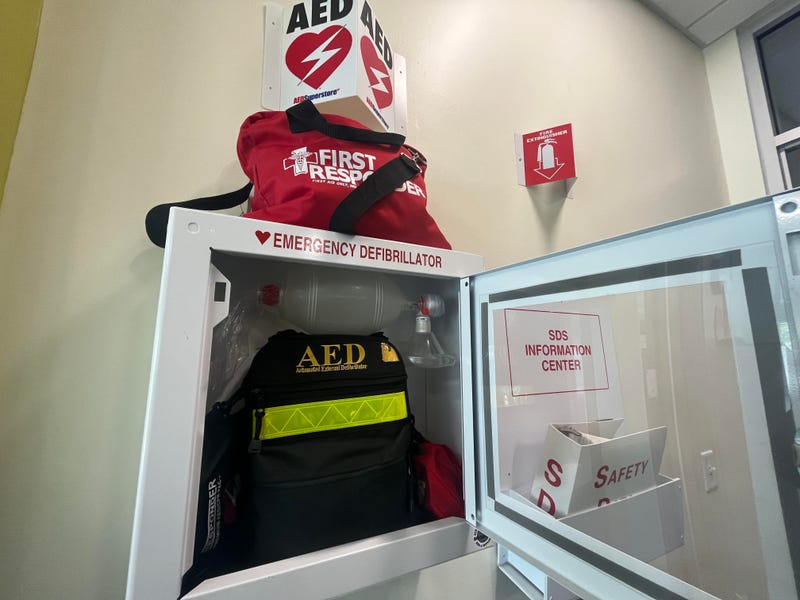
(WBEN) - It's been over eight months since Buffalo Bills safety Damar Hamlin's sudden collapse on the football field in Cincinnati, sending shockwaves throughout the nation and increasing the awareness of the live-saving practices of cardiopulmonary resuscitation (CPR), and operating an automatic external defibrillator, or AED.
"After what we all saw on national television with what happened to Damar, we saw a massive increase in organizations reaching out to us in order to receive CPR and AED education," says Jason Stulb, Executive Director of the American Heart Association for the Buffalo, Niagara region. "It's been absolutely tremendous. We've seen it on our website, we've seen it with outreach just to our organization locally. It's been kind of like a groundswell across the community with people wanting to learn both the hands-on version and the full certification as well."
LISTEN LIVE TO WBEN:
To meet up with demand and increased interest, the YMCA's across Western New York have been operating classes monthly as opposed to bimonthly or even every four months, as classes have quickly been filling up.
"Particularly over the course of the spring, we were getting a lot of phone calls from community organizations. a lot of churches and other types of organizations in the community that wanted their membership, the people that they worked with, to be better educated about CPR," said Mark Gerlach, Program Aquatics Program Director at the Lockport Family YMCA.
"We did a number of off-site trainings over the past few months. We also have rolled out a monthly training here to help meet that demand. We do three different types of CPR, one each month, here at the Lockport YMCA, and we've had some great results an attendance for that too."
The American Heart Association has seen unprecedented increases in CPR search history on its webpages. A 620% increase in page views to Hands-Only CPR content pages and and a 145% increase in pageviews to the AHA's What is CPR? page, which includes definition, stats, and AED information.
In addition, AEDs are in short supply. AEDs have been on the FDA shortage list since July 2022, due to increased demand and global semiconductor shortages. Since the Hamlin incident, AEDs are now in even greater demand, with most AEDs being backordered through 2023.
"We've had youth sports organizations, community organizations, businesses and not for profits, looking into getting AED so it does not surprise me that you're seeing a shortage of them across the country. However, the silver lining there is that people are interested in getting them and using them and making sure that people are trained in emergency preparedness on-site, so you have someone who knows how to use the AED and how to get service for the AED," says Stulb.
You can sign up for classes by through the AHA by going to cpr.heart.org. You can sign up through the YMCA by clicking here.
Both Stulb and Gerlach agree that CPR training is training that everyone should have. More than 350,000 people go into cardiac arrests outside of hospitals every year.
"We know that if someone administers CPR after cardiac arrest, they can double or triple the person's chance of survival. It's more important than ever, it's always going to be important. Right now we're still seeing rates, bystander CPR being performed only 46% of the time. That is a stat that our community should not feel as acceptable and any community in the country should feel is you know, is not acceptable,' says Stulb.
"What it's going to do is, buy that person the time that's necessary for us to get an AED or get emergency personnel there, so that the emergency personnel can save their life. And that's something I think everyone should know how to do," adds Gerlach.
